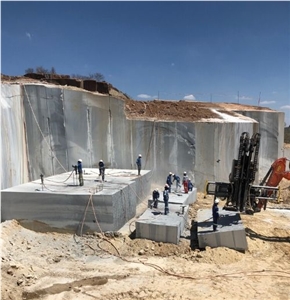Unveiling the Mysteries of Granite Quarrying: Where Toughness and Beauty Meet
The world of granite quarrying is a realm where the raw toughness of nature converges with human creativity to develop frameworks that stand the test of time with an air of style. From the midsts of quarries to the thorough sprucing up in workshops, the procedure of changing granite into building marvels is a complicated dance of practice and innovation. As we peer right into the depths of this ancient craft, we begin to uncover the covert ins and outs that shape the very essence of our built setting.
The Beginnings of Granite Quarrying
In the record of building background, the beginnings of granite quarrying are shrouded in a tapestry of ancient craftsmanship and geological wonders. Dating back to old Egypt and Mesopotamia, the extraction of granite from quarries marked the start of a trip that would eventually cause the development of some of the globe's most iconic frameworks.
Granite quarrying's origins can be traced to the proficient artisans that identified the stone's durability and visual charm. Through a combination of primitive devices and sheer decision, these very early quarry workers discovered granite blocks that would become the building blocks of worlds.
As civilizations progressed, so did the strategies of quarrying granite. The Romans, renowned for their engineering prowess, created advanced techniques for drawing out granite to build monuments, temples, and roads that stood the examination of time.
The tradition of these ancient quarrying methods continues to form modern design, with granite staying a symbol of stamina and sophistication in building tasks around the world. (granite quarries in south africa)
Tools of the Quarrying Profession
The development of granite quarrying strategies from ancient civilizations to modern-day times highlights the important role played by the tools of the quarrying sell forming the industry's practices. In old times, quarrying tools were fundamental, frequently including knives, hammers, and wedges made from materials like bronze or iron. These devices required considerable manpower and time to essence granite obstructs from quarries.

In addition, the introduction of pneumatically-driven tools and high-powered equipment has actually considerably decreased the physical labor required in quarrying a knockout post procedures, enhancing worker safety and security and performance. As the quarrying market continues to introduce, the tools of the trade remain at the leading edge of driving progression and forming the future of granite removal.
Extracting Blocks of Granite
Making use of accuracy equipment and progressed methods, the removal of granite blocks from quarries has actually become an advanced procedure in the modern quarrying sector. Controlled blasting strategies are then employed to damage apart the granite into manageable sections.

Sprucing Up and Completing Methods
To achieve a remarkable surface on granite blocks, competent artisans employ a series of precise polishing and ending up methods. After the initial removal and shaping processes, the granite blocks undergo a complete sprucing up phase to improve their natural appeal and longevity. One usual method used in polishing granite is diamond abrasion, where industrial diamonds are used to grind and brighten the rock to a smooth finish. This process not just creates a lustrous surface but also ensures harmony in shade and texture across the granite block.
Along with polishing, finishing methods are put on more refine the granite's look. These strategies might consist of flaming, sharpening, or brushing, each offering special structures and finishes to suit different visual preferences. Flaming, as an example, involves subjecting the granite surface area to high temperatures to produce a harsh, textured surface, perfect for outdoor applications where slip-resistance is crucial. Refining, on the other hand, provides a linked here matte finish that is smooth to the touch, best for interior kitchen counters and flooring. By very carefully picking and applying these brightening and ending up methods, craftsmens can change raw granite obstructs into elegant pieces that display both toughness and beauty.

Ecological Influence and Sustainability
With the growing emphasis on environmental awareness in the market, granite quarrying methods are progressively scrutinized for their impact on natural resources and long-term sustainability. Furthermore, the transportation of granite from quarries to refining centers creates carbon discharges, even more contributing to ecological degradation.
To minimize these impacts and ensure sustainability in granite quarrying, market stakeholders are taking on different procedures. Implementing advanced innovations to reduce energy intake and water usage, reclaiming quarried land for environmental remediation, and promoting accountable sourcing techniques are some methods being employed. In addition, accreditations such as the Forest Stewardship Council (FSC) her latest blog and the Management in Energy and Environmental Layout (LEED) assistance customers identify eco-friendly granite products.
Final Thought
To conclude, granite quarrying is a process that needs specialized devices and techniques to extract blocks of granite and polish them to a high level of coating. While the environmental effect of quarrying can be substantial, efforts are being made to boost sustainability practices in the market. Generally, granite quarrying is a fragile equilibrium in between utilizing the strength and beauty of this natural stone while decreasing its effect on the setting.